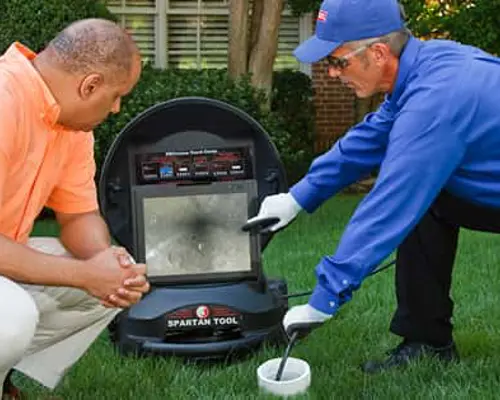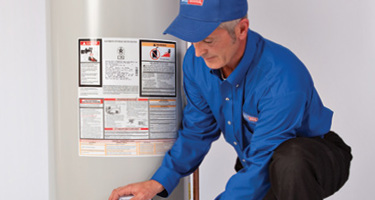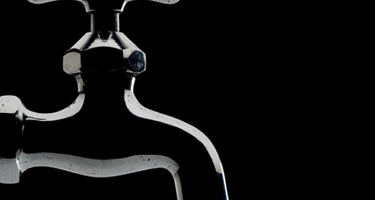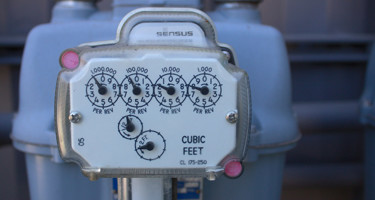
Tree roots are one of the most common causes of sewer clogs. Tree roots can spread into many different areas along your sewer pipe or septic tank and degrade the overall condition and functionality of your home's plumbing systems.
Tree root problems typically begin at trees near underground pipes and then the tree's root system grows undetected until reaching your home's sewer line pipes.
Because they can be a pain - and, if not handled correctly, may cost you a lot of money to repair - you'll want to address the root problem as soon as possible before it gets worse.
The Deal With Roots In Your Sewer Line
Tree roots may enter a sewer line through any one of several entry points:
The most common entry point for tree root infiltration is typically between the lateral connection point (where the city/town main connects to your own personal piping) and where it connects to a cleanout or T-fitting.
If tree roots are able to penetrate your cleanout or T-fitting, they will spread in any direction along the length of your sewer line or septic tank. Tree roots can grow up to one foot per day when given the chance. So tree roots that are allowed to grow for months without being detected may have several feet of growth before being discovered.
Tree root infiltration is also possible between entry points covered by protective grease caps designed to protect these access areas from tree roots entering into your sewer lines. These grease caps should be regularly inspected for tree root infiltration and replaced if necessary.
Sometimes tree roots are only detectable in manholes immediately after heavy rainfall when tree root activity is at its highest due to loose soil surrounding tree root beds.
Even though tree roots are considered healthy for the soil, tree roots entering your sewer line can cause major damage to pipes and septic tanks because tree roots tend to grow into rough shapes that will invade the inside of your sewer lines causing clogs and slow drains that back up sewage into your home or business property.
Tree root infiltration can also be attributed to high water table levels near tree root bed areas. High water tables may allow tree roots seek out other sources of moisture such as underground piping, restricting flow through it. Limbs falling from trees above or nearby have been known to penetrate underground piping. These types of problems are very hard for local plumbers, repair technicians and average homeowners alike to diagnose without knowledgeable training in tree root infiltration problems in sewer lines.
How Tree Roots Affect Your Sewer Pipes
As the trees in your yard send out roots to gather nutrients, these roots may encounter your sewer line. While sewer pipes may seem hardy and impenetrable, they are susceptible to persistent roots, particularly if your sewer line is older or made from less durable materials than modern sewer pipes.
Clay pipes and Orangeburg sewer pipes are the most susceptible pipe materials to tree root invasion, but even concrete and PVC pipes can sustain damage under certain circumstances. Once the tree roots break into your sewer line, they cause two problems to ensue.
First, the damaged portion of pipe allows sewage to leak out into your yard, causing issues such as standing water, spongy grass, and an unpleasant smell.
Second, the tree roots can continue to grow up into the pipe as they absorb water, causing a partial or complete blockage of your sewer line that affects drainage inside your home and may even lead to a sewage backup.
What Are The Symptoms of Tree Roots in Sewer Line?
The following are signs that tree roots may have invaded your sewer line:
Slow draining sinks, tubs, etc.
Tree roots can enter the exposed sewer lines via cracks or other openings against exposure to rainfall. A clog can occur slowly over time until you eventually notice it affecting your sink or other drainage system.
Sewer odors
Tree roots are excellent at absorbing wastewater that comes into contact with them. As they grow inside the sewer line, tree roots can absorb a significant amount of water. If they are near your home or office's sewage pipe, you will notice a sewer odor coming from your sinks and drains even when you use chemicals such as anti-clog agents to prevent tree root clogging in your sewer lines.
Toilet backup
Tree roots growing in the sewer line can cause tree root damage to private property including tree root blocking of drain systems that may include tree root damage to toilets which can trigger tree root backups and related problems such as tree root rot and mold.
Foundation issues
Tree root damage to foundations is another problem caused by tree roots if there is too much pressure on the foundation walls themselves. This causes cracks in the foundation walls that can lead tree roots to enter the interior of the home, office building or related structure.
Unnatural formation of yard growth
Tree roots will grow into any opening in your sewer line including cracks which can be discovered using a sewer camera inspection. Lawns and other vegetation near houses with tree root problems may appear to wilt during dry seasons, but flourish when it rains heavily due to tree root interception of water inside the sewer line.
Determining If Roots Are In Your Sewer Line System
Your home’s sewer line is buried beneath your yard for aesthetics, safety, and functionality. However, this underground placement can leave your sewer line vulnerable to questing roots, which grow outward and downward from the trees planted in your yard as they search for water and nutrients to sustain the plant.
The proper way to diagnose tree roots in sewer lines is by using a video camera inspection service, but most local plumber and plumbing supply stores typically only have a few tools for tree root detection. Most of these methods rely on trial-and-error processes in regards to how long the auger is left in the line before removal.
More advanced technologies such as electronic tree root detection devices exist, but they are prohibitively expensive for most homeowners and may not be available to you locally. Many tree root detection systems use electric current or heat sensors that will trigger an alarm when tree roots pass through it allowing trained technicians to pinpoint tree root positions within the line without having to remove any sections of piping for investigation.
Best Sewer Line Root Killer Options to Consider
There are several root killer solutions you can attempt to make at home as a way to kill tree roots and restore your home plumbing system.
Small Tree Roots: Potassium Chloride
K-Chlor (Potassium Chloride) is one of the least expensive treatments available that will work good on all tree species such as Maple, Birch, Pine, Oak, Elm and others when they have grown into sewer line pipes. K-chlor trees will start showing brown tips after about 2 weeks of treatment.
Large Tree Roots: Sodium Chloride
Sodium Chloride is the most effective tree root killer available on the market. It will kill all tree species after about 2-3 days of being applied to tree roots. The only downside is that it can be very expensive, but there are annual contracts with municipalities for sodium chloride tree root removals so homeowners can have them done with their municipal taxes each year.
Rock Salt and Copper Sulfate are not effective treatments on tree roots in sewer lines.
Can Homeowner’s Insurance Cover Sewer Tree Root Removal Cost?
Unfortunately, this damage is not covered by your house insurance. If tree roots block the pipe and cause a blockage, your home insurance does not cover it.
Damage caused by wear and tear or poor maintenance of the sewer line is not covered. A certified sewer specialist's examination can help you discover potential problems with your sewage system.
Stop Tree Roots in Your Sewer Line
The best way to handle tree root damage in your sewer line is to prevent this situation from ever happening.
Avoid tree roots by planting trees a safe distance away from existing pipe. Your plumber can help you determine the location of your sewer line so you can plant larger trees in better locations.
Certain trees are more likely to put out roots that can damage your sewer line than others, so planting sewer-friendly trees in your yard can also protect your sewer line from future damage.
If you are concerned about the age or condition of your sewer line, your plumber can perform a video inspection to determine whether the pipe could be susceptible to damage or deterioration and might benefit from replacement with a more durable and root-resistant material.
Let ARS/Rescue Rooter Plumbing Services Provide a Permanent Solution
We understand the frustration and helplessness associated with a serious sewer line issue—that’s why our plumbers are available 7 days a week for sewer line repair. Whether you are experiencing the earliest signs of a sewer line clog or are facing a major sewage backup that needs attention immediately, we can identify the cause of the problem and address it in a single visit to restore sewer line function to your property.
To help identify and repair root growth in your drain pipes, find your nearest ARS/Rescue Rooter location or schedule service online today!






